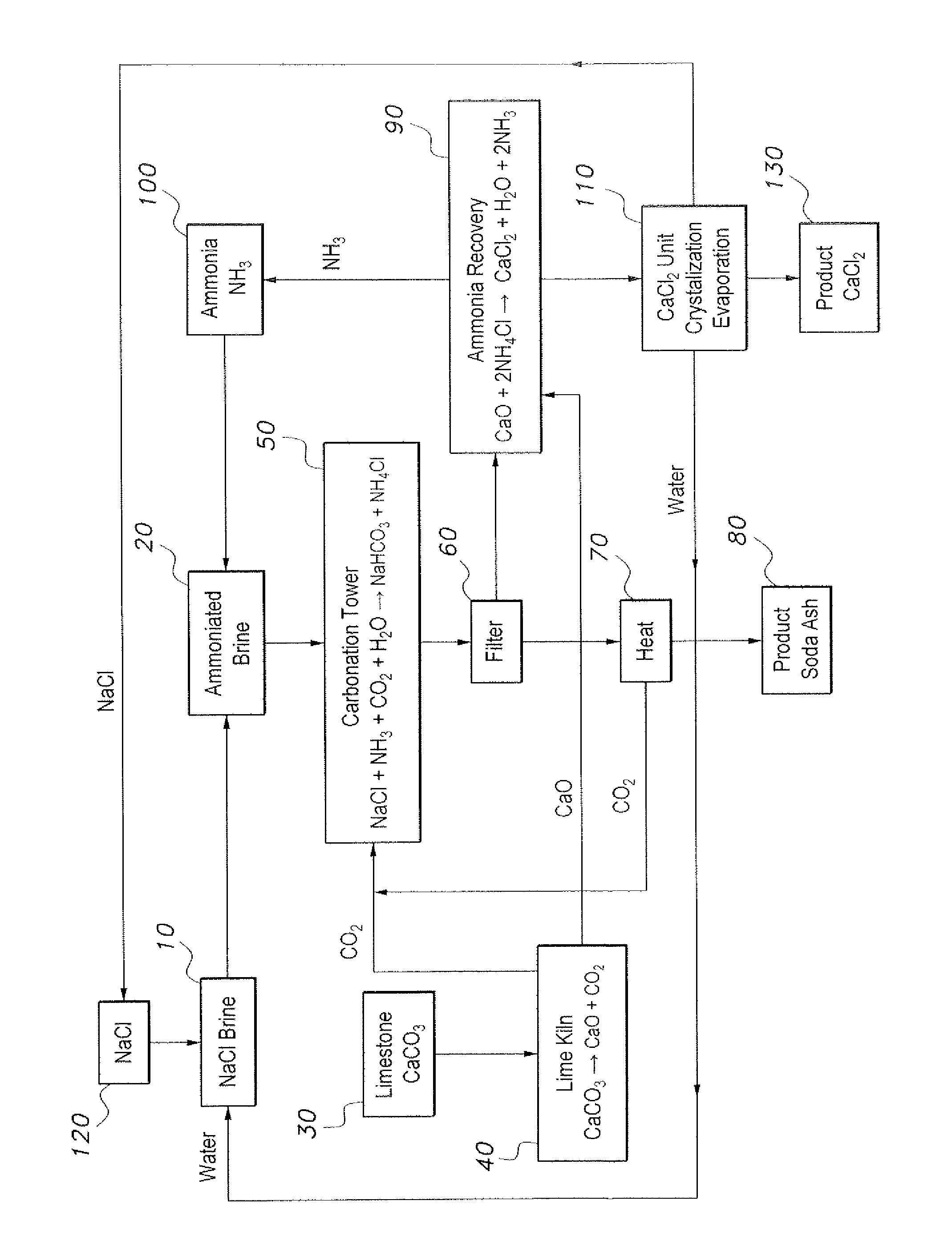Method of producing soda ash and calcium chloride
a technology which is applied in the field of soda ash and calcium chloride production, can solve problems such as environmental problems, and achieve the effect of reducing the amount of effluen
- Summary
- Abstract
- Description
- Claims
- Application Information
AI Technical Summary
Benefits of technology
Problems solved by technology
Method used
Image
Examples
Embodiment Construction
[0013]The method of producing soda ash and calcium chloride provides an environmentally friendly method of producing soda ash and calcium chloride by recovering and recycling effluents and byproducts from a modified Solvay process. The method of producing soda ash and calcium chloride is initiated with a volume of brine (NaCl+H2O) (step 10 in the sole drawing FIGURE). At step 20, the brine is ammoniated with gaseous ammonia by bubbling ammonia through the brine to form ammoniated brine. Separately, limestone is provided as a source of CaCO3 (step 30), and is heated in a lime kiln or the like to produce calcium oxide (CaO) and carbon dioxide (CO2) (step 40). At step 50, the ammoniated brine is reacted with the carbon dioxide produced by the heating of the limestone in step 40 to produce sodium bicarbonate (NaHCO3), which precipitates in the basic brine solution, and ammonium chloride (NH4Cl) in the brine effluent. The reaction of step 50 may take place in a carbonation tower or the l...
PUM
| Property | Measurement | Unit |
|---|---|---|
| wt % | aaaaa | aaaaa |
| wt % | aaaaa | aaaaa |
| temperature | aaaaa | aaaaa |
Abstract
Description
Claims
Application Information
 Login to View More
Login to View More - R&D
- Intellectual Property
- Life Sciences
- Materials
- Tech Scout
- Unparalleled Data Quality
- Higher Quality Content
- 60% Fewer Hallucinations
Browse by: Latest US Patents, China's latest patents, Technical Efficacy Thesaurus, Application Domain, Technology Topic, Popular Technical Reports.
© 2025 PatSnap. All rights reserved.Legal|Privacy policy|Modern Slavery Act Transparency Statement|Sitemap|About US| Contact US: help@patsnap.com


